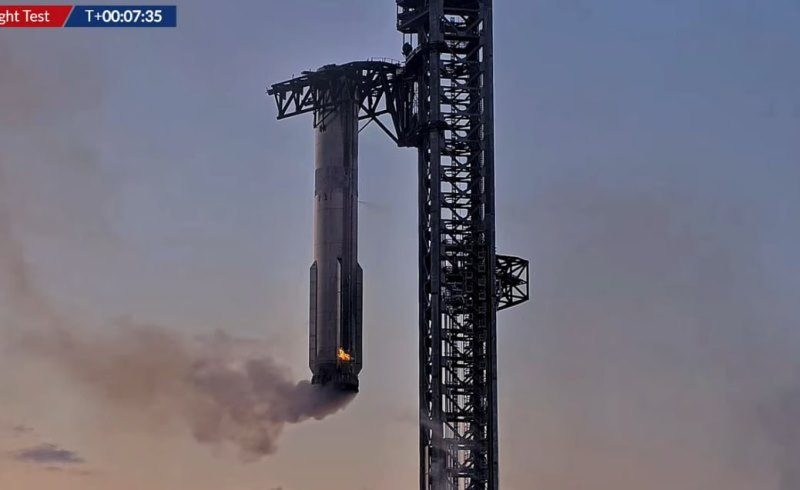The aerospace company SpaceX conducted the fifth test launch of the giant Starship rocket with the ship of the same name and the first stage of Super Heavy. The launch took place from the Starbase launch site in Boca Chica, Texas, at 08:25 local time (15:25 Moscow time). The current launch is notable for the fact that SpaceX for the first time managed to soft-land the first stage – it was picked up in the air by the Mechazilla installation, as if with chopsticks.

Image source: Spacex
Since Starship’s previous test launch in June of this year, SpaceX engineers have made a number of changes, including to improve the ship’s thermal protection. Work was done to replace the Starship’s skin, and the flaps received additional protection from high temperatures.
Today’s launch will allow SpaceX to make history, as the company managed to be the first in the world to land its super-heavy rocket, which was captured using a special Mechazilla tower located on the territory of Starbase right next to the Starship launch pad. This approach will make it possible to quickly prepare accelerators for new launches in the future.

To date, SpaceX has conducted four Starship test flights, two of which took place in April and November 2023, and two more in March and June 2024. SpaceX considered the latest test launch successful, despite the fact that the first stage was seriously damaged during splashdown. The Starship system is being developed for space flights to the Moon, Mars and more distant objects.
To deliver Starship into orbit, SpaceX will use a giant Super Heavy first stage with 33 Raptor engines. The Starship design includes 6 Raptor engines. When assembled, the height of the Starship system reaches 122 meters. Both stages of the system are reusable and after the landing technology has been developed, they can be used for repeated launches.
We also note that the US National Aeronautics and Space Administration (NASA) selected the Starship as a manned lander to deliver the first two crews of the Artemis program between lunar orbit and the south pole of our planet’s satellite.